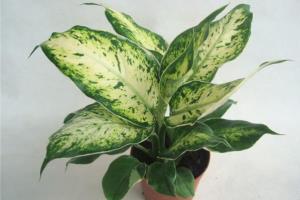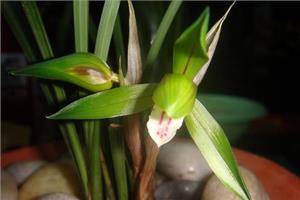How to breed spring orchids teach you how to breed spring orchids
Spring orchids have beautiful leaves, strange flowers and charming fragrance. They are very precious potted ornamental flowers and plants. If they are installed in the living room and other places, they will appear elegant and tasteful. Let's take a look at how spring orchids breed:

How to breed spring orchids teach you how to breed spring orchids
How do spring orchids reproduce?
1. Sowing and breeding of spring orchids
Spring orchids can be propagated by sowing method. The seeds of spring orchids are very fine and should be sowed immediately after seed collection. The method is that the seeds must be sown on a pre-configured special medium for orchids under aseptic conditions. Soak the seeds in hydrogen peroxide for 15 minutes for 20 minutes before sowing. Then the culture flask containing the culture medium was placed in an incubator with 20: 25 ℃ and 60% humidity. 3 months later, the seeds germinated one after another. When the seedlings had 2-3 leaflets in the culture flask, they were transplanted into sterilized peat moss from the flask, and then transplanted into a small basin after the orchid seedlings grew strong.
2. The method of branch propagation of spring orchids.
The spring orchid can also be propagated by the method of split-plant reproduction, and the moisture should be controlled for a period of time before the split, so as to keep the soil moist. At this time, the root of the orchid is soft, which can avoid breaking the root of the orchid. The ramet should choose the mother plant with strong growth, and the general spring orchid should be 10 barrels per clump. When selecting the mother plant out of the basin, you can gently remove the orchid plant from the basin, put the mud block on the side or sit flat on the ground, remove the soil from the root, and carefully trim the dead leaves and rotten roots with scissors. When operating, scissors should be cut horizontally, not directly, so as not to harm healthy roots, leaves and buds. After pruning, wash the soil of the false bulbs and roots with a small brush with clean water. Do not brush too hard, so as not to damage the root buds. Then disinfect it with 40% methyl topiramate or chlorothalonil 800 times, then leave it in a cool place to dry. When the root becomes white and soft, use scissors to cut it in the false scale base (commonly known as "road"), spread charcoal on the cut to facilitate anticorrosion, and then plant it in the basin.
- Prev

Experts on freezing injury treatment of evergreen flowers and leaves teach you to analyze and solve them.
Experts on freezing injury treatment of evergreen flowers and leaves teach you to analyze and solve them.
- Next

Disease and pest control of spring orchids teach you how to be good spring orchids
Disease and pest control of spring orchids teach you how to be good spring orchids
Related
- Wuhan Hospital Iron Tree Blooming Result Was Instantly Frightened by the Gardener Master
- Which variety of camellia is the most fragrant and best? Which one do you like best?
- What is the small blue coat, the breeding methods and matters needing attention of the succulent plant
- Dormancy time and maintenance management of succulent plants during dormancy
- Minas succulent how to raise, Minas succulent plant pictures
- What are the varieties of winter succulent plants
- How to raise succulent plants in twelve rolls? let's take a look at some experience of breeding twelve rolls.
- Attention should be paid to water control for succulent plants during dormant period (winter and summer)
- Watering experience of twelve rolls of succulent plants
- Techniques for fertilizing succulent plants. An article will let you know how to fertilize succulent plants.

